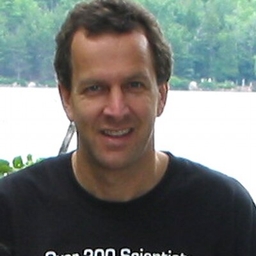
Steven Salzberg
Professor and Contributor at Forbes
Bloomberg Distinguished Professor of BME, CS, and Biostats at Johns Hopkins Univ., tennis player, https://t.co/xwqVB2TYkL, @stevensalzberg.bsky.social
Articles
-
2 weeks ago |
stevensalzberg.substack.com | Steven Salzberg
This site requires JavaScript to run correctly. Please turn on JavaScript or unblock scripts
-
3 weeks ago |
stevensalzberg.substack.com | Steven Salzberg
Most people alive today don’t realize how much science has improved their lives. Indeed, most people alive today wouldn’t even be here if not for the scientific and medical advances of the past 150 years. And for the billions of people alive today, most have much better lives than our recent ancestors did. Thanks for reading Science and skepticism! Subscribe for free to receive new posts and support my work. You don’t have to look back very far to learn how difficult life was for humans in the past.
-
2 months ago |
stevensalzberg.substack.com | Steven Salzberg
I’ve been re-reading some things that I and others wrote about the dangers of creating deadly new viruses in the lab, “super bugs” as some have called them. Today I’m sharing some of my earlier commentary along with a fresh perspective, in light of the pandemic that the world suffered starting in 2020. Here’s what I wrote in late 2017. Thanks for reading Science and skepticism! Subscribe for free to receive new posts and support my work.
-
2 months ago |
biorxiv.org | Caleb Hallinan |Hyun Ji |Steven Salzberg |Jean Fan
AbstractThe accuracy of spatial gene expression profiles generated by probe-based in situ spatially-resolved transcriptomic technologies depends on the specificity with which probes bind to their intended target gene. Off-target binding, defined as a probe binding to something other than the target gene, can distort a gene's true expression profile, making probe specificity essential for reliable transcriptomics.
-
Mar 23, 2025 |
biorxiv.org | Kuan-Hao Chao |Alan Mao |Anqi Liu |Steven Salzberg
AbstractThe SpliceAI deep learning system is currently one of the most accurate methods for identifying splicing signals directly from DNA sequences. However, its utility is limited by its reliance on older software frameworks and human-centric training data. Here we introduce OpenSpliceAI, a trainable, open-source version of SpliceAI implemented in PyTorch to address these challenges.
Try JournoFinder For Free
Search and contact over 1M+ journalist profiles, browse 100M+ articles, and unlock powerful PR tools.
Start Your 7-Day Free Trial →X (formerly Twitter)
- Followers
- 19K
- Tweets
- 7K
- DMs Open
- No